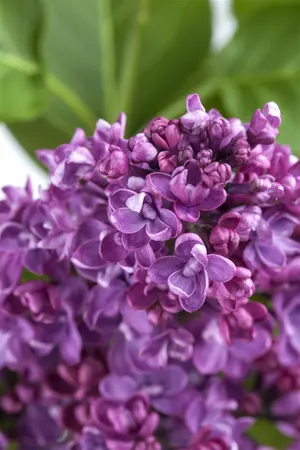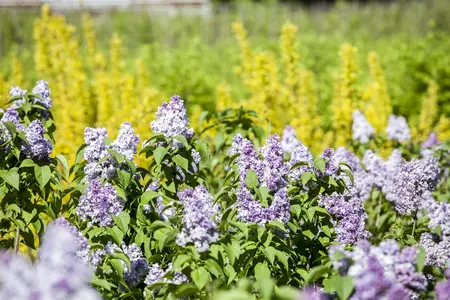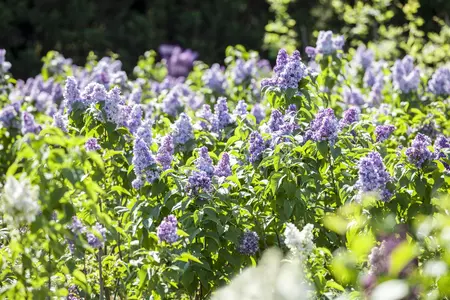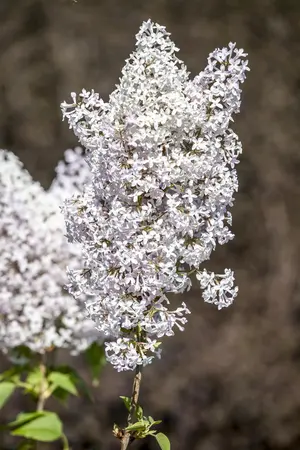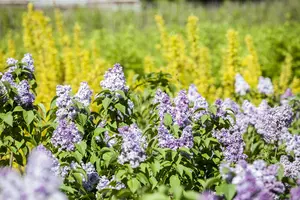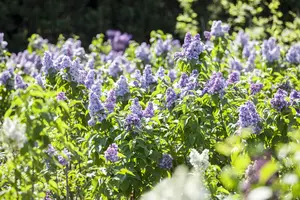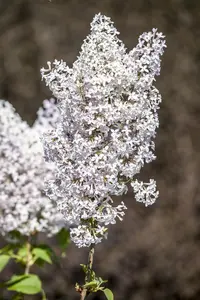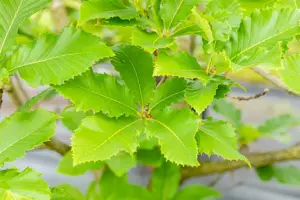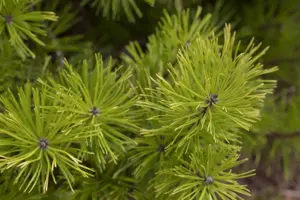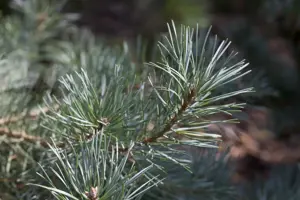Syringa vulgaris - 7.5 Ltr pot
Syringa vulgaris - 7.5 Ltr pot
Description
The Common lilac (Syringa vulgaris) is an upright, dense, branched large shrub that produces lilac-coloured flowers arranged in panicles with a strong fragrance. They appear from May to June. These produce brown fruits. They exude a strong fragrance. The Common lilac also has heart-shaped, dark green leaves. Its bark is grey-brown and fissured in strips. In a sunny to semi-shady location with humus-rich, nutrient-rich, sandy, loamy soil, it usually reaches a height of approx. 6 m and is approx. 5 m wide.
Bulletpoints
* suitable for flowering hedges
* the flowers are highly favoured by bees, bumblebees and hoverflies
* cut flower
* strongly scented flowers
* attractive yellow autumn colouring
* tolerates pruning
* easy to care for
* heat-tolerant, resistant to urban climates, wind-resistant, smoke-hardy, heat-loving, cannot be planted over, deer-resistant, stem protection recommended
leaves
The deciduous leaves of the Common lilacs are dark green, heart-shaped, opposite. They are about 5 - 12 cm in size. Common lilac turns bright yellow in autumn.
Bark
Grey-brown, striped, torn bark makes this plant an eye-catcher in any garden.
Spread
Southern Europe.
Frost hardiness
The Common lilac has good frost hardiness.
Growth
Upright, dense, branched.
Water
The plant has a medium water requirement.
Pruning
Pruning, ideally in July, is advisable for this plant.
Location
Preferred location in a sunny to semi-shady position.
Soil
Normal soil.
Planting time
Container plants can be planted all year round, except when the soil is frozen and in summer heat (over 30°C).
Planting partner
The Common lilac sets beautiful accents together with:
Common privet, large-leaved barberry, firethorn.
Tasks
- Fertilise: In the period from March to April
- Watering: In the period from May to September
- Pruning: July.
Care
- A slow-release fertiliser can be used in spring. This releases the nutrients slowly and continuously so that the plant is evenly supplied over a longer period of time.
- Lilacs flower on biennial wood, so the plant should be thinned out after flowering or plants that have grown too large should be pruned.
Flower
The purple-coloured flowers of the Common lilac appear in panicles from May to June. They grow to around 12 - 15 cm and are strongly scented.
Use
Pruning, solitary, park, bee pasture, hedge, scented garden
Root
Syringa vulgaris is a taproot and, depending on the soil, forms runner-forming, strongly spreading roots.

- Article number199
-
EAN codeSYVULGAR-2C75
- Latin nameSyringa vulgaris
- catalogLandscape shop

